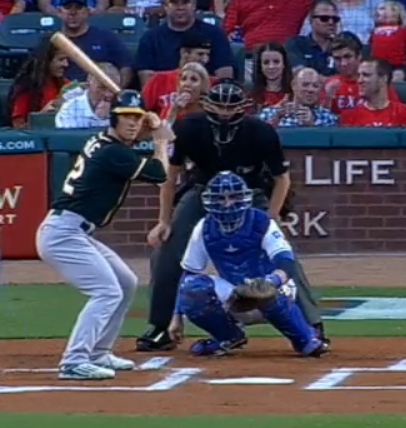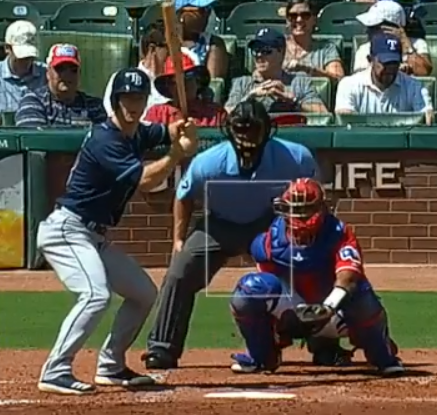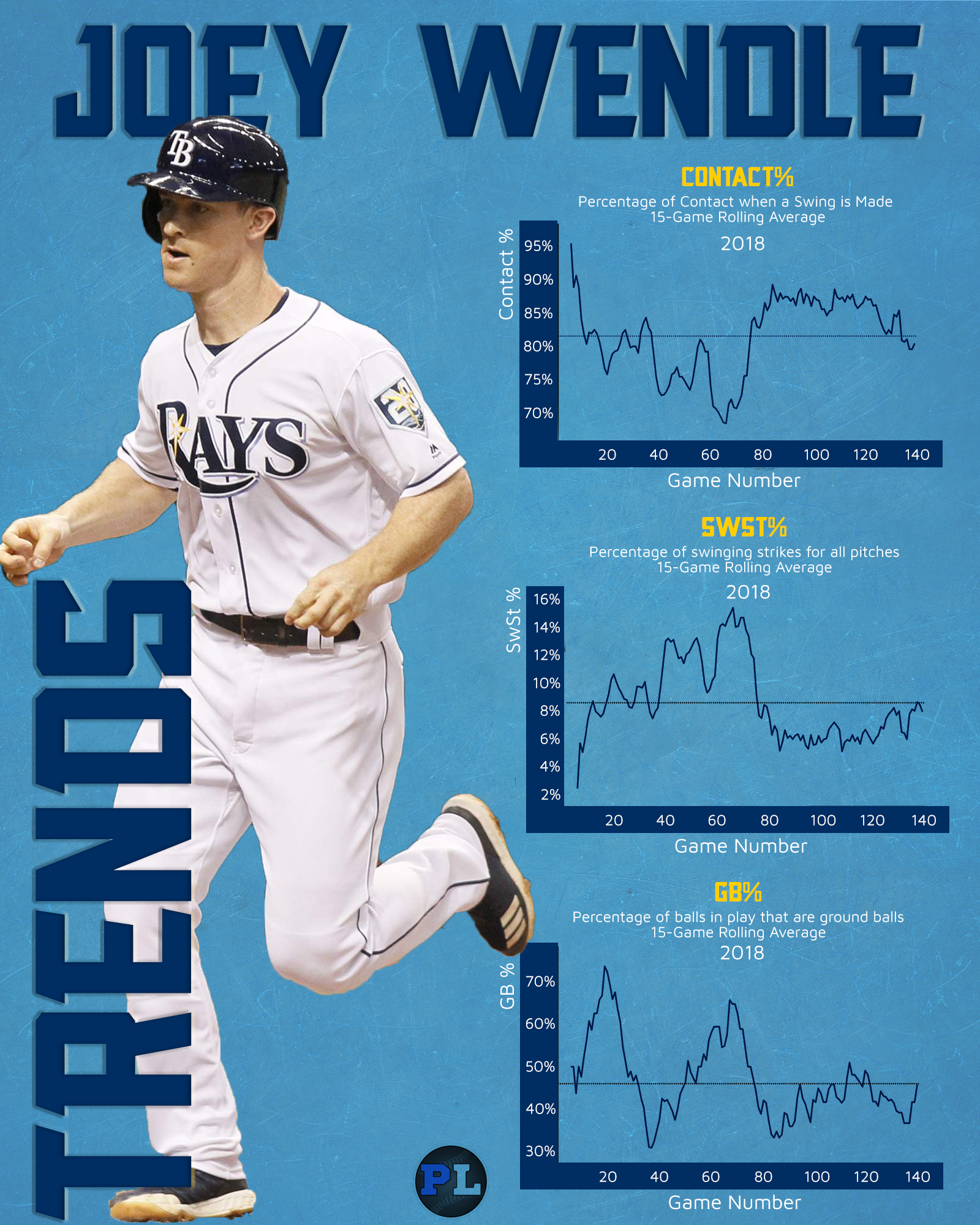It seems like every year there’s some hitter who’s bounced around the league forever who all of a sudden has a breakout season. Often times, I’m skeptical of older hitters who have a sudden breakout season unless they made a noticeable change at the plate. And that’s exactly why I believe in the breakout season Joey Wendle had last year.
Now, I say breakout, it’s not like Wendle was an MVP candidate or something, but at 28-years-old and just 36 games of MLB-level experience, the guy who was DFA’d by the Oakland Athletics last year ended up hitting .300/.354/.435 with seven home runs, 62 runs, 61 RBI, and 16 stolen bases, as well as a WAR of 3.7—higher than, among others, Bryce Harper, Joey Votto, and Miguel Andujar.
Now, is that Daniel Murphy’s 2016 breakout? No, but it’s a pretty solid season from a guy who no one expected anything out of. And there’s even reason to believe it could be better next year.
But more on that in a second—the first thing we want to figure out is, what changed? What took a guy who’s bounced around in the minors since 2012 with mediocre results to a breakout season like that? Well, the answer lies in every fantasy analyst’s four favorite words: a change in approach.
Wendle made some adjustments coming into 2018—specifically, he made some changes to his batting stance, opening it up a bit and making himself taller in the batter’s box.
You can see it here. The first photo is from 2016, the second is from last year:


Clearly, based on the results, it worked, and he got even better as the season went on. Take a look at his first- and second-half splits:
| AVG | OBP | SLG | wOBA | wRC+ | |
| First half | .283 | .331 | .394 | .314 | 100 |
| Second half | .321 | .381 | .486 | .367 | 136 |
It’s not like his first half was bad, but he went from being a decent hitter to a really good hitter. So did something else change? I’m glad you asked, because yes it did! Wendle kept working and saw some noticeable improvements.
His plate discipline got better and his whiff rate dropped significantly, his contact rate jumped up, and he saw a noticeable decrease in his groundball rate:

These all explain why he got better as the season went on—he continued refining his approach and it worked. If there’s one thing I like seeing in a player that encourages me to think his breakout is more legitimate than not, it’s adjustments. Many hitters just keep doing the same thing over and over again assuming it’ll fix their problems by, I don’t know, magic or something (I’m looking at you Chris Davis), but when a hitter makes a noticeable change and works on improving things like their plate discipline and it leads to success, I’m much more confident in their ability to repeat their success.
And let’s not forget the stolen bases—Wendle ended up with 16 last year, and posted a decent 28.3 ft/sec sprint speed. That’s not incredible by any stretch (for reference—Byron Buxton led the league last year with a 30.5 ft/sec sprint speed), but it’s solid.
Right now, Steamer has Wendle projected to regress pretty significantly next year, slashing .255/.303/.374 with eight home runs and 10 stolen bases, but I think that’s being exceptionally conservative.
Given that his .300/.354/.435 slashline came with an xStats slashline of .279/.335/.393, I don’t see any reason to assume he’s going to have a massive decline, especially if he continues making adjustments and refining his approach like he did last year.
He’s going to have a place in the Rays’ lineup next year, especially given his defense (he had six defensive runs saved at second base and third base last year), and if he keeps this up, he could be a very valuable asset in fantasy next season.


Thanks for the article Ben.
I am much more bearish on Wendle. According to Savant his xBA last year was 256, indicating a ton of BABIP luck. Maybe Wendle always outperforms his xBA a bit because of his speed but not to a 40+ degree continually.
The other issue I see is Tampa’s depth. There will be tons of competition for infield spots with Adames, Robertson, Lowe, Lowe, Solak, Duffy and Diaz in the mix. There’s really no outfield room either with Meadows coming. I wouldn’t be surprised if Wendle is sub 400 PA next season.
The steals are intriguing but a lot of the other indicators are negative.
That’s fair. Personally, I think xStats’s xAVG is a better stat than Savant’s xBA, and that number is a bit more encouraging (.279). I think he could definitely regress some, but the fact that he’s shown an ability to learn and make adjustments to his approach is really encouraging to me.
As for Tampa’s depth, I hear what you’re saying, but I don’t see how they can’t put Wendle at second given the season he had last year. I think Robertson ends up on the bench with Diaz at DH. Adames will likely stay at shortstop. I’m not sure if/when they’ll bring up Lowe and Solak, but I think Lowe would end up replacing (or platooning with) Ji-Man Choi at first rather than endanger Wendle’s playing time. And given that Wendle can play just about anywhere, that gives the Rays some flexibility.
I guess we’ll have to see how playing time shakes out. I’m probably a bigger fan of Robertson than Wendle. Robertson has a 12.1% walk rate in 594 MLB PAs, which is probably a stickier figure than Wendle’s 343 BABIP in 663 PA.
One way or another, arrows are pointing up in Tampa.